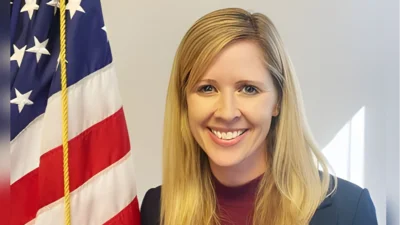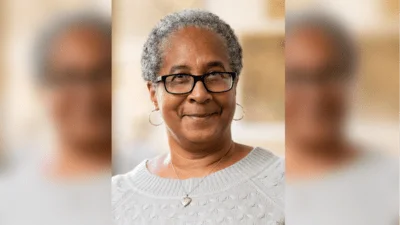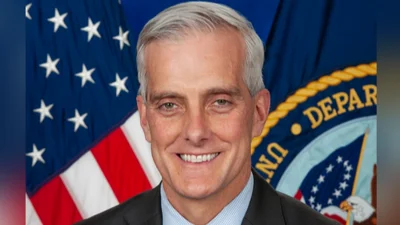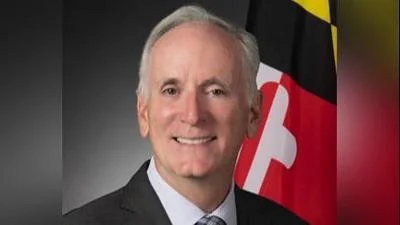Maryland Department of Transportation issued the following announcement on Oct. 31.
Transportation Secretary Pete K. Rahn today met with Baltimore City officials to discuss the Draft FY 2019-2024 Consolidated Transportation Program (CTP), which details the Maryland Department of Transportation’s (MDOT) draft six-year capital budget. Today’s meeting was part of MDOT’s annual tour of 23 Maryland counties and Baltimore City to update local officials and the public on the Hogan administration’s $16 billion investment over the next six years in transit, highways, Motor Vehicle Administration facilities, the Helen Delich Bentley Port of Baltimore, and Baltimore/Washington International Thurgood Marshall Airport (BWI Marshall). Officials also discussed the Maryland Transportation Authority’s $3.3 billion in additional investments in Maryland’s toll roads and bridges.
“We continue to deliver on the largest construction program in the state’s history, improving customer service at MDOT, and setting records for containers at the port and for passengers at the airport,” said Secretary Rahn.
MDOT team members representing the agency’s business units were: Transportation Secretary Rahn; Administrator Ricky Smith from the MDOT Maryland Aviation Administration (MDOT MAA); Deputy Administrator Phil Dacey from the MDOT Motor Vehicle Administration (MDOT MVA); Administrator Kevin Quinn from the MDOT Maryland Transit Administration (MDOT MTA); Administrator Greg Slater from the MDOT State Highway Administration (MDOT SHA); Executive Director Kevin Reigrut from the Maryland Transportation Authority (MDTA); and Administrator Jim White from the MDOT Maryland Port Administration (MDOT MPA).
Secretary Rahn outlined key updates on transportation investments. Statewide, there are 816 airport, highway, transit, port, bicycle, and Motor Vehicle Administration construction projects underway with a value of $8.8 billion.
In addition to these projects, transportation officials announced funding for Baltimore City’s local priorities, including: $948.3 million in Highway User Revenues for the city for fiscal 2019–2024, which includes an additional $5.6 million in grants recently awarded by the governor; and highway safety grants funded through MDOT MVA, including $94,000 for the Baltimore City Police Department.
MDOT MTA makes a significant investment in transit services in Baltimore City through the operation of 56 BaltimoreLink bus routes, Metro SubwayLink, Light RailLink, MobilityLink, MARC train service, and five Commuter Bus routes.
As part of the inaugural Statewide Transit Innovation Grant program (STIG), Baltimore City was awarded $50,000 to study the installation of real-time information signs at bus stops shared by Charm City Circulator and MDOT MTA’s BaltimoreLink service.
Additional improvements to bus stops are underway as well, with 200 bus shelters to be installed, increasing the number of stops with shelters by 50 percent.
Since the launch of BaltimoreLink on June 18, 2017, MDOT MTA has improved on-time performance of core bus service to nearly 70 percent, up from 59.5 percent in the fall of 2016. In partnership with Baltimore City, more than 5.5 miles of dedicated BaltimoreLink bus lanes were installed and have improved travel times by up to 25 percent. MDOT MTA has also installed Transit Signal Priority (TSP) sensors on the entire bus fleet and at nearly 50 intersections, allowing buses to communicate with traffic signals and improve travel times up to 22 percent.
In partnership with the city, MDOT MTA is continuing deployment of Phase 2 of the TSP project. Installation of TSP sensors for Liberty Road and Belair Road is expected to be complete in fiscal year 2019.
The MDOT MTA bus system is safer than ever. Despite providing over 300,000 more miles of additional service, there have been 20 percent fewer accidents than under the previous system. In addition, bus-related complaints are down 49 percent.
MDOT MTA is continuing to improve access to job sites. In February, the LocalLink 63 route was launched, providing service from downtown Baltimore to the Tradepoint Atlantic job center which is expected to house 10,000 jobs by 2025.
In September, overnight service on the LocalLink 75 line was extended to Horseshoe Casino. The service expands access to 24-hour jobs and the Greyhound terminal, improving connections between BWI Marshall and inter-city transit options.
MDOT MTA is partnering with the city on a $27 million project to revitalize a stretch of North Avenue. MDOT MTA has dedicated $14.7 million toward the project, dubbed North Avenue Rising. This is in addition to $10 million from the U.S. Department of Transportation’s Transportation Investment Generating Economic Recovery (TIGER) grant, $1.6 million from the Federal Highway Administration, and $1 million from Baltimore City. The project will include dedicated bus lanes, bike facilities, enhancements to Light RailLink and Metro SubwayLink stations, improvements at major bus stops and sidewalks, streetscaping, and roadway repaving. The project is underway, and final designs will be submitted to the Federal Transit Administration in November.
MDOT MTA is investing $400 million to replace the Metro SubwayLink railcars and signal system. The new vehicles will enhance passenger comfort and convenience and ensure better reliability.
Additionally, MDOT MTA is investing $160 million to overhaul the major systems on the Light RailLink trains to ensure reliable service to the end of each car’s useful life.
With many Baltimore City residents relying on MARC commuter rail service to travel to jobs in Washington, D.C. and other destinations, MDOT MTA is investing $52 million to overhaul 63 MARC III passenger coaches. In addition, MDOT MTA has dedicated $61 million for production of eight new MP-36 diesel locomotives. The Federal Railroad Administration also recently approved high-speed testing for 54 MARC IV coaches, allowing these vehicles to travel at 125 miles per hour, the fastest commuter rail service in the country.
MDOT MTA continues to make investments in technology by providing mobile ticketing for all services and partnering with Transit App to provide real-time transit information for riders.
Aside from transit, Secretary Rahn also highlighted the latest records at the Port of Baltimore, including the port handling 10.9 million tons of general cargo – from autos and heavy machinery to containers – in fiscal 2018. The port remains No. 1 in the nation for autos and roll on/roll off machinery, and handled a record 596,972 containers in 2017.
BWI Marshall, meanwhile, has experienced steadily growing passenger traffic with new airlines and service to new domestic and international markets. In 2017, BWI Marshall set a new all-time annual record for passenger traffic by exceeding 26 million passengers. The airport has seen strong growth continue this year, setting passenger records through August in 37 of the previous 38 months.
Baltimore City will receive $250,000 in Transportation Alternatives Program grant funding for design of the 0.8-mile Middle Branch segment of the Baltimore Greenway Trails Network. The segment, located along Middle Branch of the Patapsco River, will connect Gwynns Falls Trail to the Inner Harbor.
In addition, MDOT SHA last year launched a Transportation and Civil Engineering (TRAC) program at Patterson High School as part of the school’s STEM curriculum. The program encourages students to seek engineering careers, provides resources, and allows students to compete nationally against other schools. This year, MDOT SHA has added the Mt. Washington School and the Cross Country School to the TRAC program and is actively recruiting additional Baltimore City schools.
At MDTA, Governor Hogan’s toll rate reductions have saved Marylanders $186 million since 2015. A Tier 1 National Environmental Policy Act (NEPA) study of location and funding options for a third Chesapeake Bay crossing began in January 2017 and will take up to 48 months to complete.
Transportation officials encouraged Baltimore City to develop a highway safety plan or adopt Maryland’s. Maryland experienced 558 roadway fatalities in 2017. The state’s Strategic Highway Safety Plan targets the most common causes of roadway fatalities in Maryland: impaired driving; speeding; not wearing seat belts; distracted driving; and not using crosswalks. Secretary Rahn encouraged people in attendance to sign MDOT’s Traffic Safety Pledge, located at: https://www.surveymonkey.com/r/MDOTsafetypledge.
Officials and residents met today at City Hall. The meeting was the 20th stop on the annual CTP tour, which is scheduled to conclude November 15 in Baltimore County. Meetings are planned at various locations in all 23 Maryland counties and Baltimore City. For the complete CTP tour schedule with dates, times and locations visit: http://www.mdot.maryland.gov/newMDOT/Planning/CTP/2018_CTP_Tour/Index.html. To view the Draft CTP, visit: www.ctp.maryland.gov.
Each fall, MDOT presents its draft six-year capital program to every county and Baltimore City for review and comment. Following input from the 24 local jurisdictions, MDOT prepares a final budget to present to the General Assembly in January.
Original source can be found here.

Source: Maryland Department of Transportation






 Alerts Sign-up
Alerts Sign-up